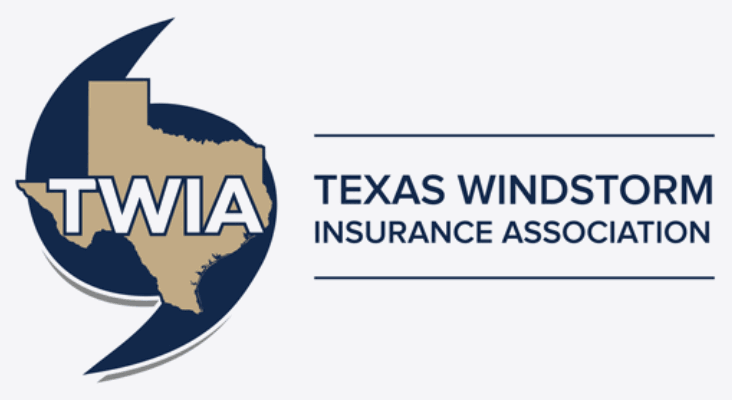TWIA renewal FoT’s imply ~29% increase in reinsurance rate-on-line YoY

Firm order terms (FOT’s) for the 2022 traditional reinsurance renewal for the Texas Windstorm Insurance Association (TWIA) suggest an increase of roughly 29% in rate-on-line (RoL), which translates into a spend higher than budgeted, but that is aligned with market conditions and TWIA’s growing program.
At a Board meeting today that is ongoing, TWIA officials heard from their reinsurance broker Gallagher Re, who’s representatives explained that reinsurance costs are on the rise.
As a reminder, TWIA is looking to have roughly $2.04 billion of reinsurance and catastrophe bonds in-force for the 2022 wind season, buying some more protection and with that coverage attaching a little higher up than last year at $2.2 billion and running to $4.236 billion.
Within that reinsurance tower component, above the $2.2 billion attachment, sits $900 million of multi-year catastrophe bond protection still in-force through this renewal, from its $400 million Alamo Re II Pte. Ltd. (Series 2020-1) catastrophe bond and $500 million Alamo Re Ltd. (Series 2021-1) catastrophe bond.
TWIA is currently out in the cat bond market looking to replace its maturing $200 million of Alamo Re Ltd. (Series 2019-1) cat bonds, which as we explained appears to be going to plan and a replacement, or near replacement is very likely.
However, the eventual size of TWIA’s Alamo Re 2022-1 catastrophe bond will be determined by pricing and market feedback, as TWIA’s brokers Gallagher Re look to secure the optimal mix of protection to sit alongside the still in-force cat bond coverage for 2022.
Gallagher Re executive Allen Cashin told the TWIA Board today that while there are still some favourable conditions in the reinsurance market for certain buyers, there are also challenges ahead and conditions seem to be worsening, his comments seemed to imply.
Years of higher catastrophe losses that “appear to be on an upward trend” are driving risk aversion and causing reinsurers to shift their capacity around the market, Cashin said.
“Obviously as you have cat losses come into the market it affects price,” he explained.
Adding that, as well as changes in risk appetite, the market is seeing some bigger buyers of reinsurance, including some residual markets buying more in 2022.
In addition, inflation is also seen as a significant headwind by many reinsurers, and this is driving buyers to require more limit as they plan to pay higher losses due to rising inflation.
Add to this the influence of the retrocession market, which while small carriers significant weight in determining reinsurance market conditions, and Cashin expects conditions to remain challenging.
“Since KRW we’ve seen really cheap retro, but the punchbowl of retro is being puled away, it’s a changing market nearly daily,” he commented.
Adding that the widespread reduction in PML at some major reinsurers is partly down to reduced retro limit being available.
Onto TWIA’s specifics and while the Texas insurer of last resort has not faced major losses in the last year, it’s exposure is rising and so it is buying more cover for 2022, approximately $120 million more.
That, along with other factors, from inflation, to model updates, to market conditions, and the fact reinsurers are pricing TWIA based on projected exposure during the wind season, effectively mean higher pricing.
Explaining in more detail, Gallagher Re’s representatives said that the starting point for pricing discussions was the 5.25% rate-on-line secured across the 2021 TWIA reinsurance program firm order terms (FOT’s).
Additions to be considered include: exposure changes year-on-year; model updates; taking off some RoL for a 5% increase in the attachment point; then loading for inflation and market conditions; giving an indicative program rate-on-line of closer to 6.82%.
It’s important to also consider here that TWIA is procuring $120 million, or 15% more, in reinsurance limit than the prior year.
Which makes the fact Gallagher Re’s team said firm-order-terms (FOT’s) for the 2022 traditional reinsurance renewal look set to come in at 6.75% all the more impressive, given that is below where the financial modelling above suggests it would have been.
But, the percentage increase is just under 29%, from the 5.25% of 2021’s FOT’s, to the expected 2022 reinsurance FOT’s of 6.75%.
On a cost basis, Gallagher Re anticipate TWIA’s final reinsurance costs coming in at between $119 million and $120.5 million for the 2022 renewal, across both traditional and cat bonds, which is roughly 17% up on the prior years and budgeted $102 million spend.
Things could change a little, as the exact mix of catastrophe bonds and traditional reinsurance is secured, but TWIA’s experience appears to reflect market forces, of buying some more limit, plus paying a little more across the program, in both cat bond and reinsurance forms.
One additional and important fact that the Gallagher Re representatives divulged, was that the new Alamo catastrophe bond works off projected exposure levels, so addresses how exposure growth can result in coverage gaps, which the two older in-force Alamo cat bonds do not address.
That’s a benefit of using this new cat bond structuring feature, that will support TWIA over-time if its total insured value levels continue to rise.






